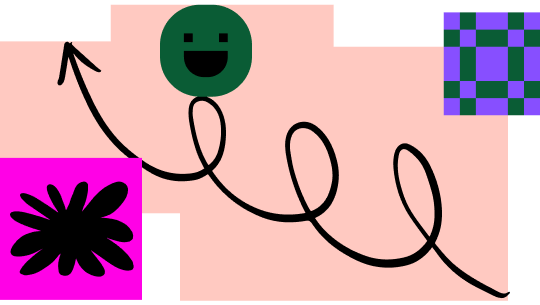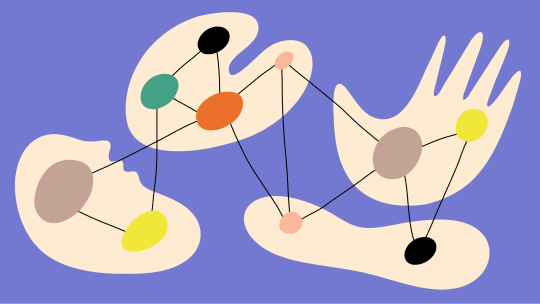Accelerating Innovation: Swiggy rolls out features 50% faster with Figma
Time to read: 4 minutes
Summary: Swiggy, India’s pioneering on-demand convenience platform, faced the challenge of scaling personalized experiences across its diverse user base while managing complex design workflows. By integrating Figma into its processes, Swiggy transformed collaboration among design, product, and development teams, enabling faster feedback and iterations. As a result, the time to roll out new features was cut by nearly 50%, allowing Swiggy to enhance user experience and maintain its competitive edge in a rapidly evolving market.

Challenge: Scaling personalization and consistency in a multi-product ecosystem
If you had to choose one app that has transformed the daily lives of ordinary Indians—whether it's a homemaker in Delhi or a college student in Bangalore—many may choose Swiggy. As India’s leading food delivery service, and through offerings like Swiggy Dineout and Swiggy Instamart, Swiggy has become synonymous with convenience. But with a massive user base of millions, they faced a challenge in creating consistent experiences that felt personal for each individual, even while scaling across devices, platforms and services. The task was monumental—how do you scale personalization?
Design is how you win over customer hearts.
— Sriharsha Majety, MD and Group CEO at Swiggy
For Swiggy’s leadership, the answer lay in design. “We have a ‘design with emotion’ philosophy, where every single touchpoint, every interface, every experience has to delight,” says Sriharsha Majety, Swiggy’s MD and Group CEO.
However, achieving design consistency and maintaining a delightful user experience became increasingly difficult with multiple business lines that required fast feature rollouts. With a growing user base, the challenge lay in managing this complexity without sacrificing personalization or quality.
Compounding this was the shift to a hybrid work environment, since Swiggy’s design and development teams often worked remotely. The decentralized nature of the workforce made collaboration more difficult. Without element reusability across tech stacks, the development process slowed down and complicated efforts to maintain consistency across services. Additionally, Swiggy’s consumer-first approach meant user testing was crucial—but incorporating feedback and making necessary changes within a tight timeframe was a significant hurdle in design and rollout efforts.
Solution: Accelerating design speed and improving collaboration with Figma
Swiggy’s Head of Design, Srinath Rangamani, and his team turned to Figma to not only manage these complexities but also speed up the process of bringing new products to market. With Figma, ideas that once took weeks to develop were now being shared with business leaders in real-time. Feedback was given directly within the file, allowing for rapid iterations. “The time it took for us to roll out ideas and make them available to our end consumers was cut almost in half,” Swiggy’s Head of Design, Srinath Rangamani explains.
Build once, see everywhere: Streamlining design across an expanding ecosystem
For Swiggy’s designers, working in different cities on different products, Figma enabled access to a shared design language that cut down the time and effort needed. “Figma allows us to demonstrate user stories and publish entire components to the design library for any business unit to access," adds Prasanna Venkatesh R, Director of Design, New Initiatives at Swiggy.
With Figma’s Design System, we have a foundation library that supports all our business lines. You build once, and you use it everywhere.
— Tushar Tayal, Director of Engineering at Swiggy
Apart from consistency, Figma enabled Swiggy to cross one more hurdle– user testing. “Figma’s prototyping feature allows us to gather early feedback from potential users—tracking what they interact with, what they skip—and make quick iterations. In fact, Figma offers the fastest prototyping experience I’ve ever worked with,” says Saptarshi Prakash, Assistant Vice President, Design at Swiggy.
Additionally, Figma's Auto Layout has significantly streamlined Swiggy's design process, automating adjustments for long pages like their food feed and eliminating the need for manual changes. "It also makes responsive design effortless, allowing us to adapt to different device sizes seamlessly," says Saptarshi.
Collaborative culture: Bridging designers and non-designers
With the pace of innovation requiring synchronous workflows and fast, effective brainstorming, FigJam has enabled non-design teams to play a vital role in shaping design decisions. When ideas move through several rounds of feedback from product to engineering and marketing, FigJam lets hundreds of people review and contribute to the design. As Tushar Tayal, Director of Engineering at Swiggy puts it, “When you get ideas from different teams, you get a design that works for everyone, down to the last user.” The result? Accelerated decision-making, enhanced data understanding, and improved marketing around the product. However, this massive level of collaboration, which previously took months, now happens within 2-3 weeks.
Instamart was launched entirely remotely, and it was possible because Figma allowed seamless collaboration across teams.
— Prasanna Venkatesh, Director of Design at Swiggy
Developer and designer Synergy: Speeding up execution
The reduction in time and effort was also observed in another crucial area. Earlier, Swiggy’s design and developer teams often faced challenges in translating designs into functional code, often caught in a time consuming, manual handoff process. However, the introduction of Figma’s Dev Mode and code generation tools significantly improved the speed of execution, allowing for quicker launches of new features and services.
“Figma’s code generation tool helps our developers get the first version of the UI right, whether for mobile or web.,” Tushar explains. Srinath adds, “There was always a gap between the concept and production. Dev Mode bridges that gap by giving engineers direct access to our design systems and workflows, making it easier to bring ideas to life.”
From rapid prototyping and seamless user testing to maintaining design consistency and bridging the gap between design and development, Figma has been integral to Swiggy’s design-led growth. By enabling innovation at scale, Figma ensures Swiggy can meet the demands of its users while continually pushing the boundaries of what’s possible. In an ever-evolving digital landscape, Swiggy’s collaboration with Figma highlights how the right design tools can fuel innovation, speed, and excellence—ultimately benefiting both the brand and its customers.
About Swiggy
Industry: Instant Commerce
Location: Bangalore, India
Number of customers: Up to 16 million monthly users
Business challenges: Communication across teams, Development efficiency, Product quality
Products: Figma Design, FigJam, Dev Mode
See how Figma can help you scale design
Great design has the potential to differentiate your product and brand. But nothing great is made alone. Figma brings product teams together in a fast and more inclusive design workflow.
Get in touch to learn more about how Figma can help companies scale design.
We’ll cover how Figma can help:
- Bring every step of the design process—from ideation, to creation, to building designs—into one place
- Accelerate design workflows with shared company-wide design systems
- Foster inclusivity in the product team process with products that are web-based, accessible, and easy to use





